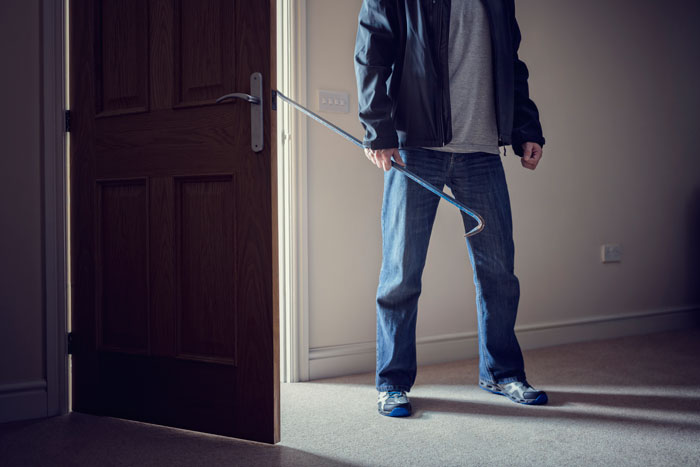
What You Need To Know About Property Crimes in California
While the term property crimes gets tossed around by the media, in California, you aren’t going to be charged with a “property crime.” The reason for this is because, in California, the phrase property crime is actually a blanket term that’s used to describe multiple crimes.
The four most common property crimes in California are:
- Arson
- Theft
- Burglary
- Vandalism
If the media says that you have been charged with one or more property crimes, it means you’ve been charged with one or more of these offenses.
Arson is pretty self-explanatory. Arson happens when you deliberately set fire to a property. In California, arson is always a felony. If you’re convicted, you will spend anywhere from 16 months to nine years in prison. One of the big factors that determines how long you’re incarcerated includes if you set fire to your own personal property, if the burned structure was inhabited, and if anyone suffered a serious injury as a result of the fire.
One of the interesting things about arson is that it’s the only property crime you can be charged with, even when the property is your own.
There are multiple types of theft charges in California. For a theft to be considered a property crime, it had to have been committed on someone else’s property. Examples of theft that fall into the category of property crime include:
- Shoplifting
- Grand theft auto
- Robbery
- Embezzlement
- Package theft
Whether your charges are for misdemeanor theft or felony theft depends on the collective value of what was stolen. If the property was less than $900, you’d only face misdemeanor theft charges. If it exceeded $900, you’d be charged with a felony.
Most people not only think of burglary as a property crime but also as a violent crime. To be charged with burglary in California, not only do you have to break into someone’s property (house, barn, shed, storage unit), but you have to do so for the purpose of stealing something. If you’re convicted of second-degree or first-degree burglary in California, you’ll face up to 20 years in a California state prison.
Vandalism, while serious, is often considered the most minor of California’s property crimes. Vandalism is simply the destruction of someone else’s property. To be convicted of vandalism in California, you had to intentionally create the damage and knew the property wasn’t yours. The degree of punishment connected to vandalism in California depends on how much damage was caused. Restitution is often part of the sentence.

What is Sober Living in California? How Does It Work?
When most people hear the term sober living, they assume that it refers to a person who has decided to completely abstain from alcohol and drugs.
The truth is that sober living is actually a program that’s designed to help addicts start the long road to recovery.
Sober living in California involves an addict moving into a facility where they will not only be able to avoid temptation but will also be provided with the tools needed to rebuild their lives and learn how to live without drugs/alcohol. In the past, many of the facilities that currently identify as sober living facilities were called halfway houses.
Most of the residents at sober living facilities are individuals who have been recently released from jail for drug charges. Many have just completed a lengthy sentence. The idea behind sending them to a sober living facility is that it provides them with a place to stay and the resources needed to ease their transition back into reality. While many of the people enrolled in one of California’s sober living facilities have been recently released from jail, some are individuals who don’t necessarily have a criminal record but were actually residents of a long-term rehab program who want to reenter life outside of rehab at a slower pace.
The great thing about sober living facilities in California is that they do more than provide residents with a place to stay. They are no longer run like mini-jails that some halfway houses became. While the residents do have rules they have to follow while they are residing at the sober living facility, they also have access to tools and resources that would have been difficult for them to find had they simply returned to their homes.
One of the things sober living residents learn is how to embrace a sober lifestyle and resist the temptation to give into their addiction once they are reunited with their loved ones. This education can include recognizing which people aid in their addiction. What habits triggered their addiction. How to replace illegal substances with healthier, less addictive options.
Each sober living facility has different rules, policies, and approaches to helping the residents establish the foundation for a sober future, but most have a few common rules, which include:
- Zero-tolerance for addictive substances
- Frequent alcohol and drug tests
- Mandatory chores
- Curfews
- Employment requirements
- Mandatory attendance at sobriety support groups and rehabilitation programs
While each person’s experiences are different, many of the people who have gone through one of California’s sober living programs credit the program with giving them the confidence and tools needed to enjoy a sober lifestyle even after they’ve graduated from the sober living program.

